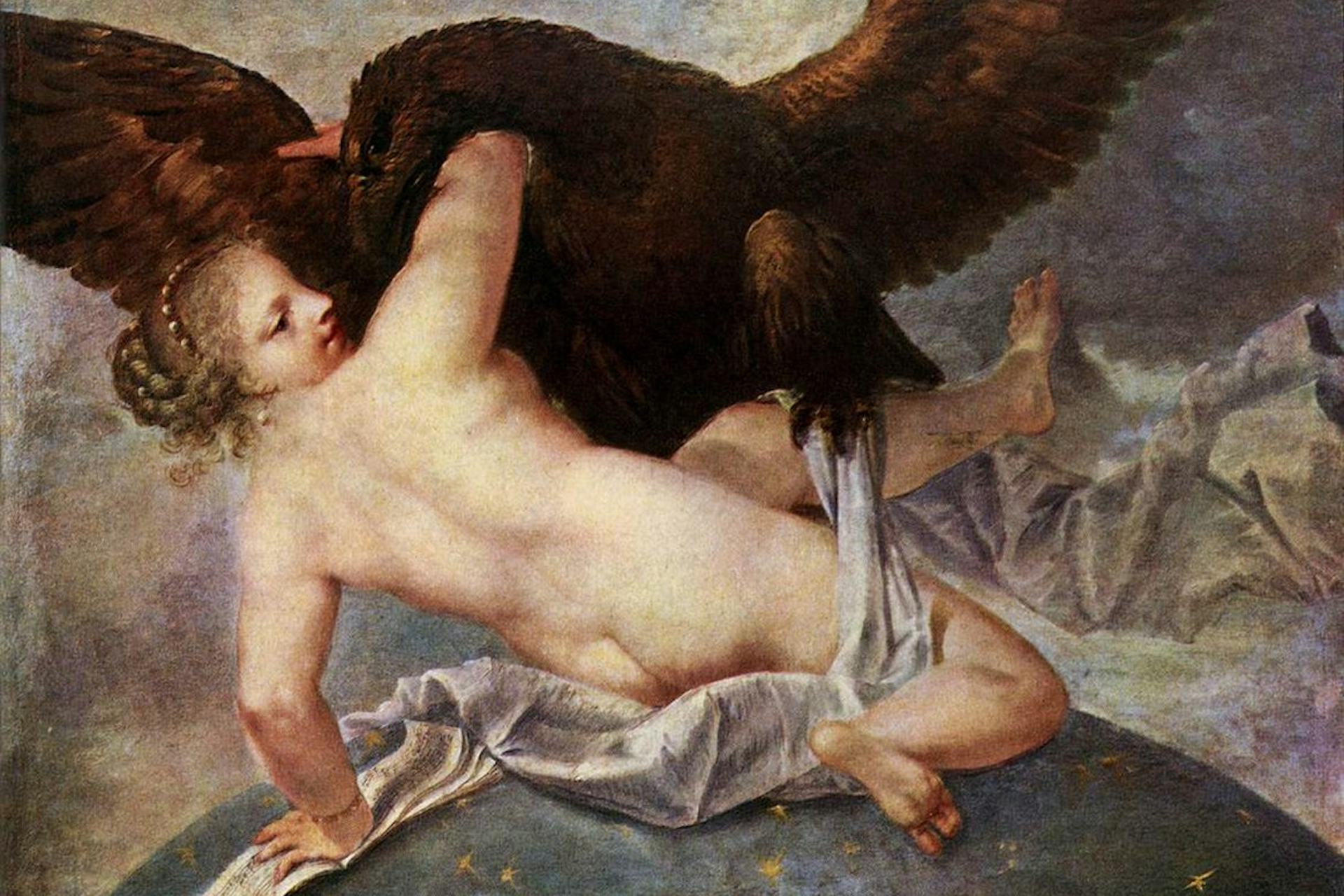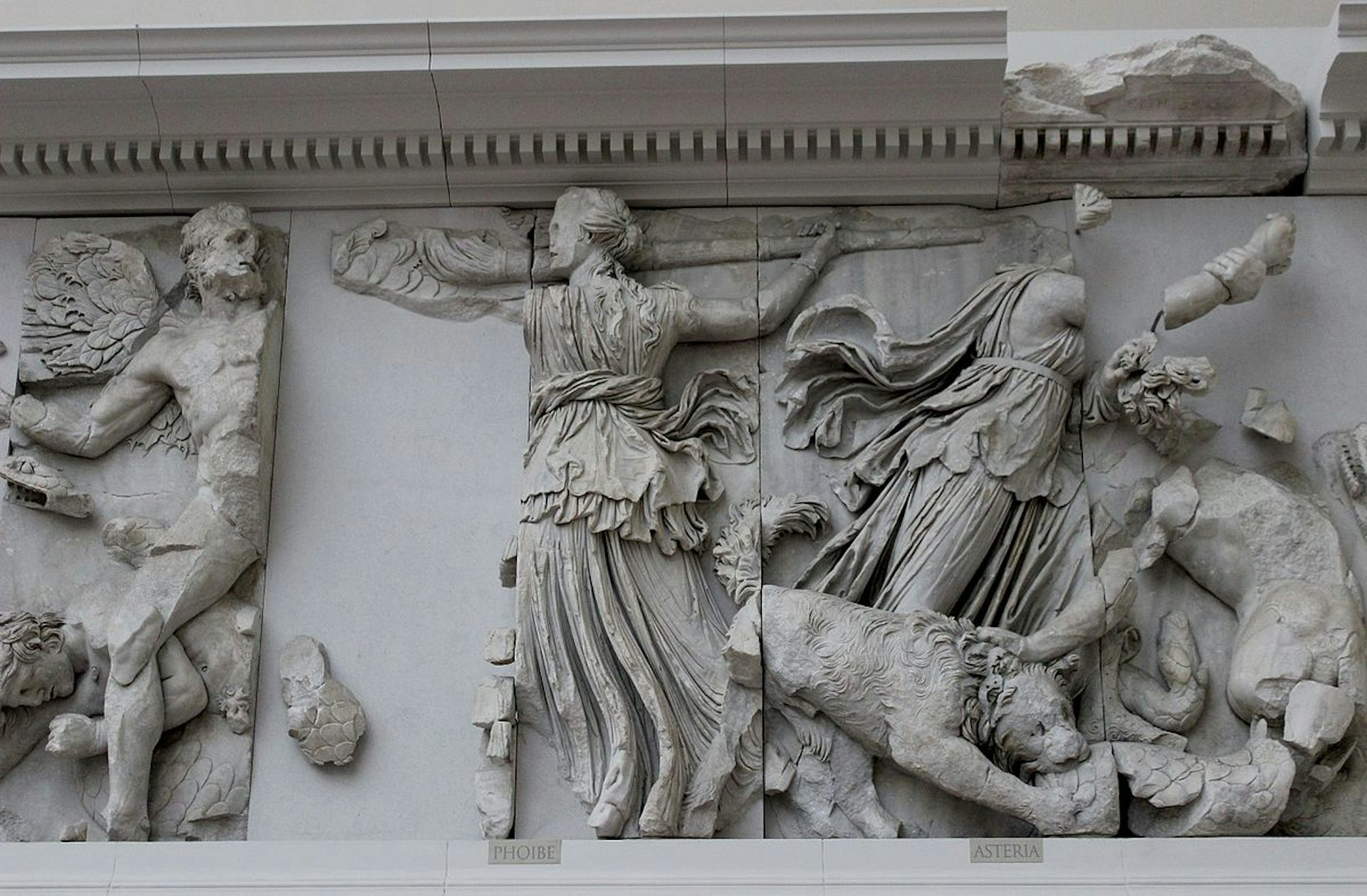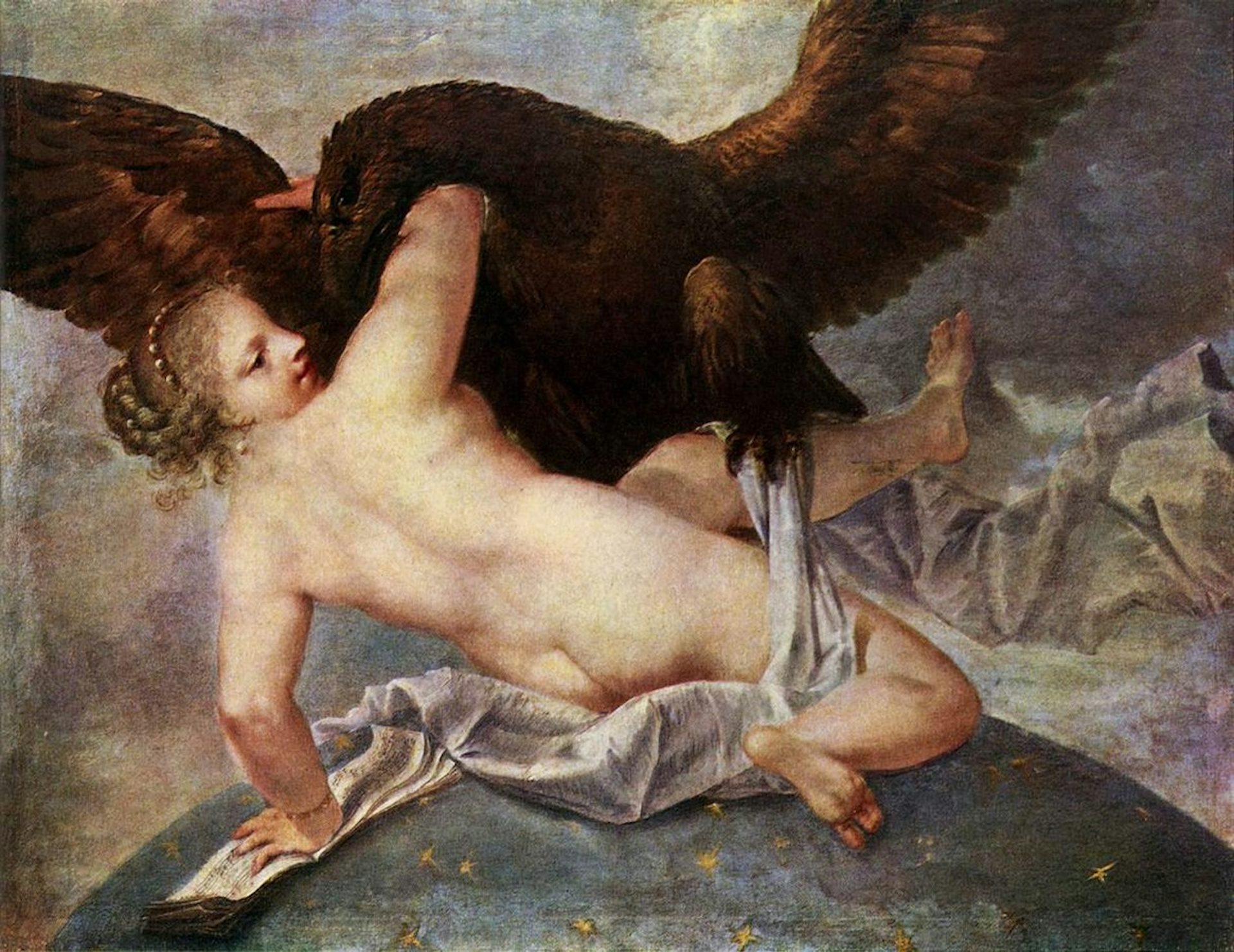Asteria

Jupiter and Asteria by Marco Liberi (second half of 17th century). Museum of Fine Arts, Budapest, Hungary.
Wikimedia CommonsPublic DomainOverview
Asteria was the daughter of two of the original twelve Titans, Coeus and Phoebe, and was often numbered among the Titans herself. According to the standard tradition, she married Perses, another second-generation Titan, and gave birth to Hecate, a goddess of witchcraft. Through her sister Leto, Asteria was the aunt of the Olympians Apollo and Artemis; like them, she was sometimes associated with celestial bodies (her name is related to the Greek word for “star”).
Some mythological sources tell of how Asteria was loved by Zeus and/or Poseidon. Wanting to escape these voracious gods, she transformed herself into a quail, threw herself into the sea, and ultimately became the island of Delos.
Etymology
The etymology of the name “Asteria” (Greek Ἀστερία, translit. Astería) is fairly straightforward: it is presumably connected to the Greek word ἀστήρ (astḗr, “star”), itself derived from the Proto-Indo-European root *h₂ster- (“star”).[1]
Pronunciation
English
Greek
Asteria Ἀστερία (translit. Astería) Phonetic
IPA
[uh-STEER-ee-uh] /əˈstir i ə/
Attributes
Asteria’s name—which comes from the Greek word for “star”—suggests that she was connected with celestial bodies. Though she was almost never depicted in ancient art, Asteria does appear on a relief of the famous Pergamon Altar (second century BCE), where she is shown wielding a torch and fighting the Giants alongside the Olympian gods and her daughter Hecate.[2]

Asteria (labelled) taking part in the Gigantomachy. Detail of the sculpted relief of the Pergamon Altar (2nd century BCE).
Miguel Hermoso CuestaCC BY-SA 4.0In some traditions, Asteria was eventually transformed into the island of Delos, where Leto gave birth to Apollo and Artemis (see below). It is possible that a figure named as “Delos,” sometimes depicted alongside Apollo and Artemis in ancient art, represents this altered form of Asteria.[3]
Family
Asteria was a daughter of Coeus and Phoebe, two of the original twelve Titans born to Gaia and Uranus. She had one sister, Leto, the mother of Apollo and Artemis. Asteria married Perses, who, like her, was a second-generation Titan.[4]
Family Tree
Mythology
According to Hesiod’s Theogony, Asteria “of happy name”[8] was born from the union of the Titans Coeus and Phoebe. She went on to marry Perses and give birth to Hecate.
Very few myths about Asteria have survived, though there is one story in which she became a target of Zeus’ lust (or Poseidon’s, in other versions). Asteria tried to flee by metamorphosing into a quail and throwing herself into the sea. When Zeus (or Poseidon) continued his pursuit, Asteria transformed again, this time into a floating island. The island was first simply called Asteria, then Ortygia (from the Greek word ortyx, meaning “quail”), then finally Delos.[9]

Jupiter and Asteria by Marco Liberi (second half of 17th century). Museum of Fine Arts, Budapest, Hungary.
Wikimedia CommonsPublic DomainLater, when Asteria’s sister Leto was in labor with her children by Zeus, Zeus’ jealous wife Hera forbade any land from receiving Leto. Because of this, Leto was forced to wander the earth in desperation until she came to the floating island of Delos, which had once been her sister. There, she was finally able to rest and give birth to her children, Apollo and Artemis. As a reward, Apollo rooted Delos in place and made it his sacred island.
Worship
Asteria, like the other Titans, was rarely worshipped in the Greek world. One source, however, claimed that the Phoenicians sacrificed quails to Asteria due to one of Heracles’ adventures. As the story goes, when the hero Heracles traveled to Libya and was killed by the monster Typhoeus, his nephew Iolaus brought him a quail, which resurrected him as soon as he smelled it.[10]